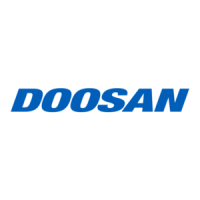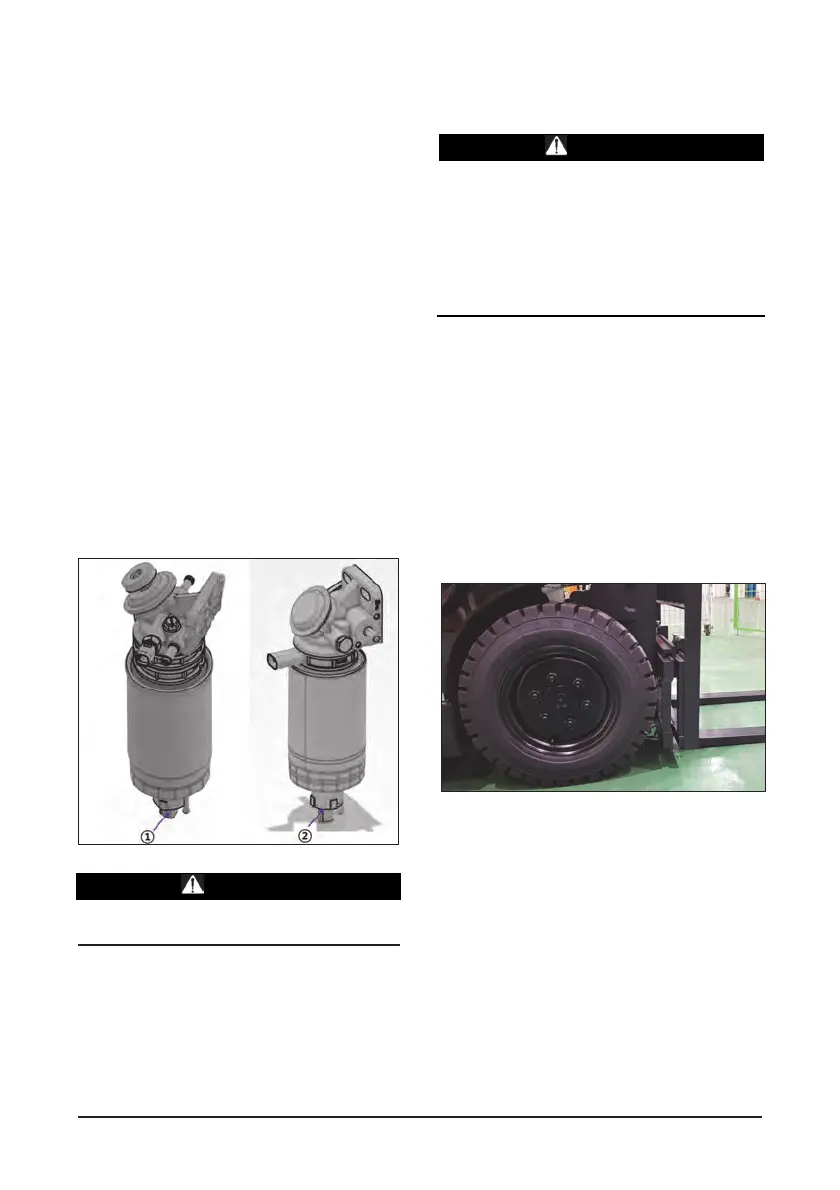Maintenance Section
-143-
Water Separator (D20/25/30/33S-9,
D35C-9 DM02VA, DM02P Engine
Only) - Check, Drain
1.
If the engine check lamp indicates any fault
related to water separator, remove the water in
the separator immediately, regardless of regular
maintenance schedule. (SPN 97)
2.
Lower part of the fuel filter is the water separator,
in which a sensor is installed to monitor water
and contaminants and transmit warning signal to
the indicator to notify the operator of the water
accumulated in the separator.
3.
Drain the water in the water separator as follows.
4
Place an approved container under the water
separator for collecting the water and
contaminants.
5.
Open the drain cock on the bottom of the water
separator of the fuel filter. Drain the water in the
water separator. (Figure, 1 for Main Filter Only, 2
for Pre Filter Option)
6.
Close the drain cock by hand.
7.
Having completed above procedures, check that
the fuel system is filled with fuel. Filling fuel
system with fuel
WARNING
Prior to any service or maintenance activity, Test
Fuel System for Leaks.
Tires and Wheels - Inspect, Check
WARNING
Servicing and changing tires and rims can be
dangerous and should be done only by trained
personnel using proper tools and procedures.
If correct procedures are not followed while
servicing tires and rims, the assemblies could
burst with explosive force and cause serious
physical injury or death.
Follow carefully the specific information
provided by your tire servicing man or dealer.
Check Inflation and Damage
Inspect tires for wear, cuts, gouges and foreign
objects. Look for bent rims and correct seating of
locking ring.
Check tires for proper inflation. See “Tire Inflation
Pressures”.
To inflate tires always use a clip-on chuck with a
minimum 60 cm (24 inches) length of hose to an in-
line valve and gauge.
Always stand behind the tread of the tire. NOT in
front of the rim.
Do not re-inflate a tire that has been run while flat or
underinflated, without first checking to make sure the
locking ring on the rim is not damaged and is in the
correct position.
When tires are changed, be sure to clean all rim
parts and, if necessary, repaint to stop detrimental
effects of corrosion. Sand blasting is recommended
for removal of rust.
Check all components carefully and replace any
cracked, badly worn, damaged and severely rusted
or corroded parts with new parts of the same size
and type. If there is any doubt, replace with new
parts.
Do not, under any circumstances, attempt to rework,
weld, heat or braze any rim components.

